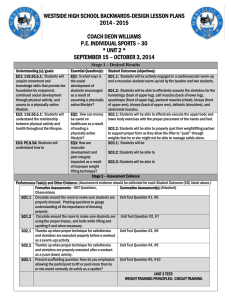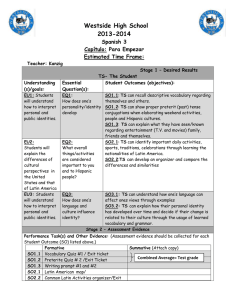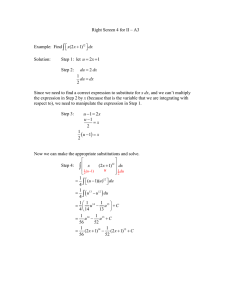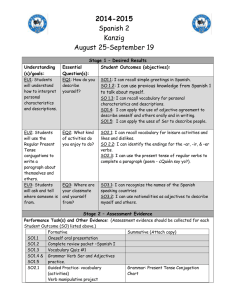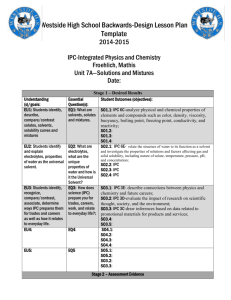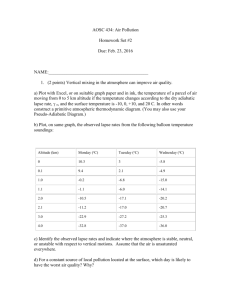Westside High School Backwards-Design Lesson Plan Template 2013-2014
advertisement
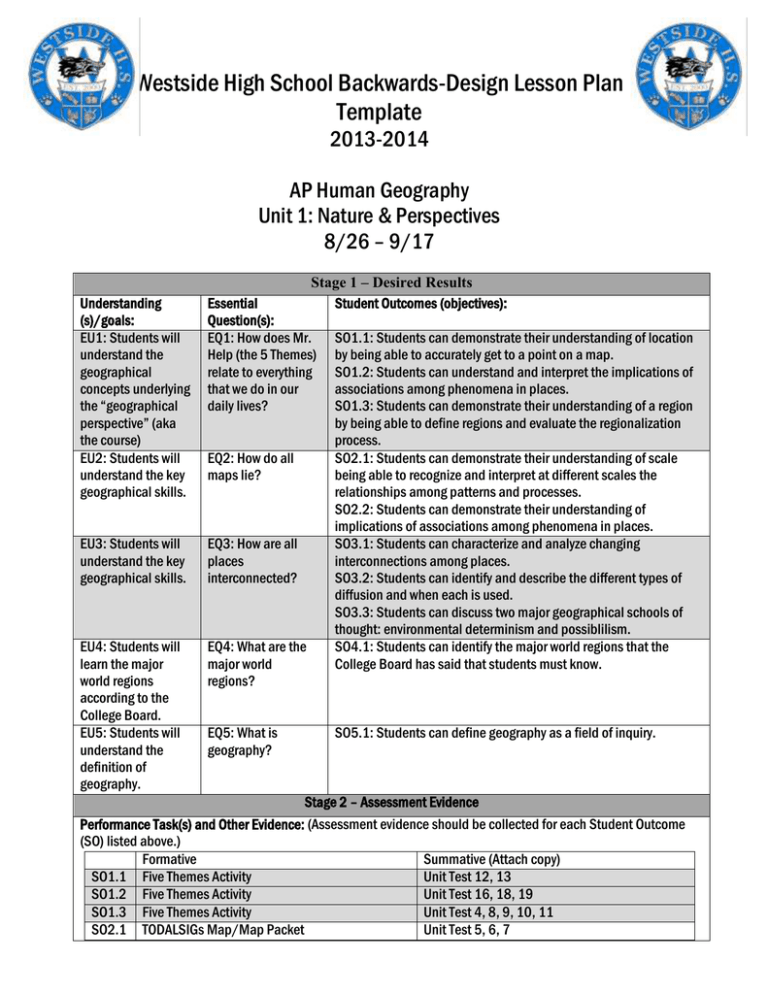
Westside High School Backwards-Design Lesson Plan Template 2013-2014 AP Human Geography Unit 1: Nature & Perspectives 8/26 – 9/17 Stage 1 – Desired Results Student Outcomes (objectives): Understanding (s)/goals: EU1: Students will understand the geographical concepts underlying the “geographical perspective” (aka the course) EU2: Students will understand the key geographical skills. Essential Question(s): EQ1: How does Mr. Help (the 5 Themes) relate to everything that we do in our daily lives? EU3: Students will understand the key geographical skills. EQ3: How are all places interconnected? EU4: Students will learn the major world regions according to the College Board. EU5: Students will understand the definition of geography. EQ4: What are the major world regions? EQ2: How do all maps lie? EQ5: What is geography? SO1.1: Students can demonstrate their understanding of location by being able to accurately get to a point on a map. SO1.2: Students can understand and interpret the implications of associations among phenomena in places. SO1.3: Students can demonstrate their understanding of a region by being able to define regions and evaluate the regionalization process. SO2.1: Students can demonstrate their understanding of scale being able to recognize and interpret at different scales the relationships among patterns and processes. SO2.2: Students can demonstrate their understanding of implications of associations among phenomena in places. SO3.1: Students can characterize and analyze changing interconnections among places. SO3.2: Students can identify and describe the different types of diffusion and when each is used. SO3.3: Students can discuss two major geographical schools of thought: environmental determinism and possiblilism. SO4.1: Students can identify the major world regions that the College Board has said that students must know. SO5.1: Students can define geography as a field of inquiry. Stage 2 – Assessment Evidence Performance Task(s) and Other Evidence: (Assessment evidence should be collected for each Student Outcome (SO) listed above.) Formative Summative (Attach copy) SO1.1 Five Themes Activity Unit Test 12, 13 SO1.2 Five Themes Activity Unit Test 16, 18, 19 SO1.3 Five Themes Activity Unit Test 4, 8, 9, 10, 11 SO2.1 TODALSIGs Map/Map Packet Unit Test 5, 6, 7 SO2.2 SO3.1 SO3.2 SO3.3 SO4.1 SO5.1 Map Packet Test 1 / Exit Ticket Test 1 Why are we here? Discussion World Region Activity Journal 1 Unit Test 15, 17, 25, 26, 27, 28 FRQ Part 1 Unit Test 1, 2, 3, 14, FRQ Part 2 Unit Test 20, 21, 22, 23 Test 1 Unit Test 24 Glossary Understanding (s)/goals [this is a goal, not an objective. List the big ideas or concepts that you want them to come away with, not facts that they must know] Essential Question(s): [What leading questions can you ask of students to get them to understand the Big Ideas?] [Address the heart of the discipline, are framed to provoke and sustain students interest; unit questions usually have no one obvious “right” answer Student objectives (outcomes): Students will be able to: [These are observable, measurable (often dally) outcomes that students should be able to demonstrate and that you can assess. Your assessment evidence in Stage 2 must show how you will assess these.] [Your learning activities in Stage 3 must be designed and directly linked to having students be able to achieve the understandings, answer the essential questions, and demonstrate the desired outcomes Performance Tasks: [Authentic, performance based tasks that have students apply what they have learned and demonstrate their understanding.] [designed at least at the application level or higher on Bloom’s Taxonomy. ] [Rubrics can be used to guide students in self-assessment of their performance] Other Evidence: [includes pre-assessment, formative assessment, and summative assessment evidence] [Can be individual or group based] [Can include informal methods (such as thumbs up, thumbs down, and formal assessments, such as quiz, answers to questions on a worksheet, written reflection, essay] Learning Activities: [[This is the core of your lesson plan and includes a listing describing briefly (usually in bullet or numbered form so easy to follow) what: the students will do during the class to prepare them for the outcomes you expect of them.] the teacher will do to guide the learning] Understanding by Design, Expanded 2nd Edition by Grant Wiggins and Jay McTighe Chapter 1. Backward Design: Figure 1.4. UbD Design Standards Stage 1—To what extent does the design focus on the big ideas of targeted content? Consider: Are . . . The targeted understandings enduring, based on transferable, big ideas at the heart of the discipline and in need of uncoverage? The targeted understandings framed by questions that spark meaningful connections, provoke genuine inquiry and deep thought, and encourage transfer? The essential questions provocative, arguable, and likely to generate inquiry around the central ideas (rather than a “pat” answer)? Appropriate goals (e.g., content standards, benchmarks, curriculum objectives) identified? Valid and unit-relevant knowledge and skills identified? Stage 2—To what extent do the assessments provide fair, valid, reliable, and sufficient measures of the desired results? Consider: Are . . . Students asked to exhibit their understanding through authentic performance tasks? Appropriate criterion-based scoring tools used to evaluate student products and performances? Various appropriate assessment formats used to provide additional evidence of learning? The assessments used as feedback for students and teachers, as well as for evaluation? Students encouraged to self-assess? Stage 3—To what extent is the learning plan effective and engaging? Consider: Will the students . . . Know where they're going (the learning goals), why the material is important (reason for learning the content), and what is required of them (unit goal, performance requirements, and evaluative criteria)? Be hooked—engaged in digging into the big ideas (e.g., through inquiry, research, problem solving, and experimentation)? Have adequate opportunities to explore and experience big ideas and receive instruction to equip them for the required performances? Have sufficient opportunities to rethink, rehearse, revise, and refine their work based upon timely feedback? Have an opportunity to evaluate their work, reflect on their learning, and set goals? Consider: Is the learning plan . . . Tailored and flexible to address the interests and learning styles of all students? Organized and sequenced to maximize engagement and effectiveness? Overall Design—To what extent is the entire unit coherent, with the elements of all three stages aligned?
